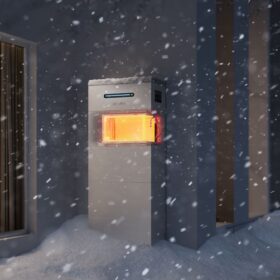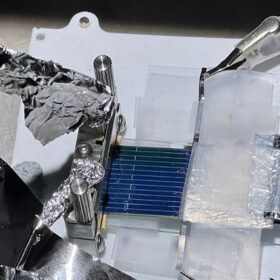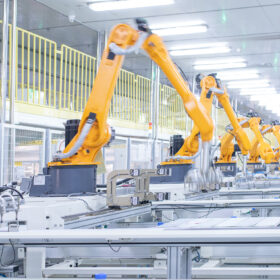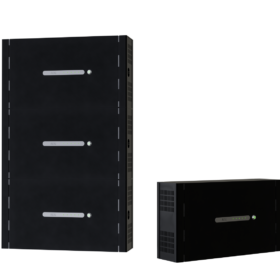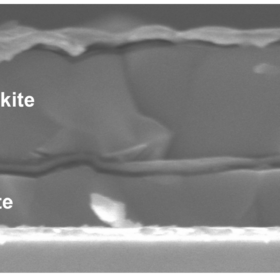Trane launches all-in-one air-source modular multi-pipe heat pump
The Thermafit Air-Source Modular Multipipe heat pump uses R-454B as the refrigerant and has a size of 30 tons. The manufacturer said the system act as a chiller to cool the building, as a heat pump to heat the building, or as a heat recovery unit to deliver simultaneous heating and cooling.
Weiheng Ecactus releases high voltage lithium iron phosphate battery for residential PV
Weiheng Ecactus has unveiled its new Myrtillo battery system, with 4.99-29.9 kWh of capacity, giving users the flexibility to connect up to five units in parallel.
Singaporean startup achieves 22.6% efficiency for perovskite solar module
Singfilm Solar said the result was certified by China’s National PV Industry Measurement and Testing Center (NPVM).
PV cell integrating molecular thermal storage tech achieves 14.9% solar utilization efficiency
Scientists in Sweden have integrated a PV device with a molecular solar thermal (MOST) energy storage system, which acts as as a solar cell optical filter and cooling agent. The proposed combination achieves a 0.2% higher PV efficiency and solar storage efficiency of 2.3%.
Vietnam sets $0.026/kWh tariff for net-metered solar power
Vietnam plans to introduce a net-metering scheme for rooftop PV. The Ministry of Industry and Trade (MoIT) has proposed a tariff of VND 671 ($0.026)/kWh for surplus solar power.
JinkoSolar-led group to build 10 GW solar cell, module factory in Saudi Arabia
A JinkoSolar-led consortium has announced plans to construct a 10 GW solar cell and module factory in Saudi Arabia with PIF and Vision Industries Company.
High-altitude floating PV has energy payback time of 2.8 years
New research from Switzerland showed that alpine floating PV systems can outperform lowland or ground-mounted counterparts in terms of energy yield and sustainability. The scientists found that the main material-reduction potential of such floating PV installations lies in the resource-intensive mounting system.
AEG unveils 5 KWh stackable high-voltage battery
Germany’s AEG is selling new stackable, high-voltage batteries with usable capacity of 5 kWh. They come with a 10-year warranty and reportedly have a lifecycle of more than 4,500 cycles.
Albania’s 300 MW solar tender attracts lowest bid of €0.0397/kWh
The Albanian authorities have revealed that a recent 300 MW solar tender has attracted a lowest bid of €0.0397/kWh. The government has shortlisted nine bidders with an average offered price of €0.0513/kWh for 283.9 MW of preselected capacity.
All-perovskite tandem solar cell based on tin-lead perovskite achieves 27.8% efficiency
Scientists in the United States have fabricated an all-perovskite tandem solar cell that reportedly shows reduced interfacial energy loss in the cell’s top device. It was built with a hole transport layer based on a compound known as P3CT that was doped with lead iodide.


